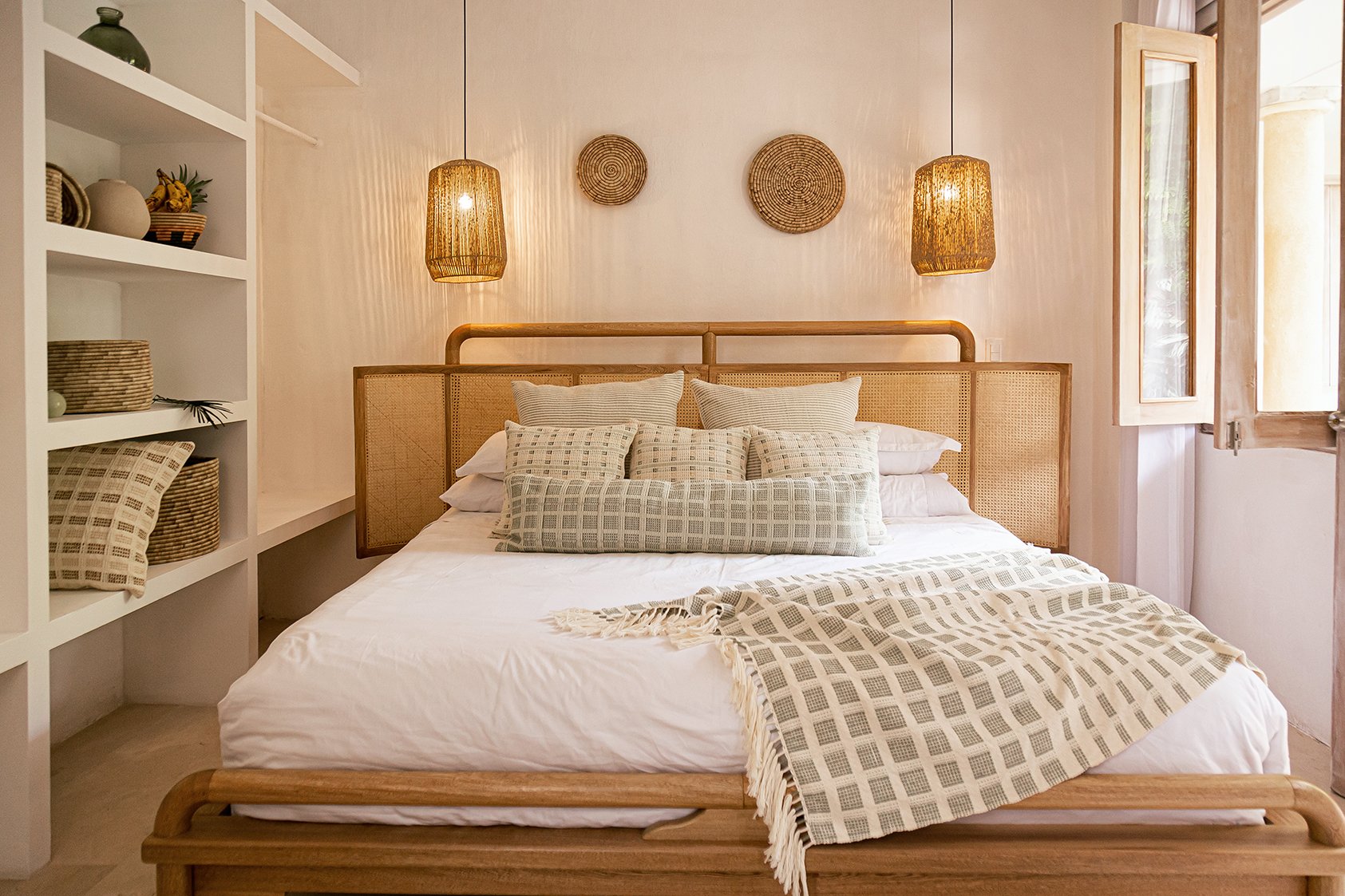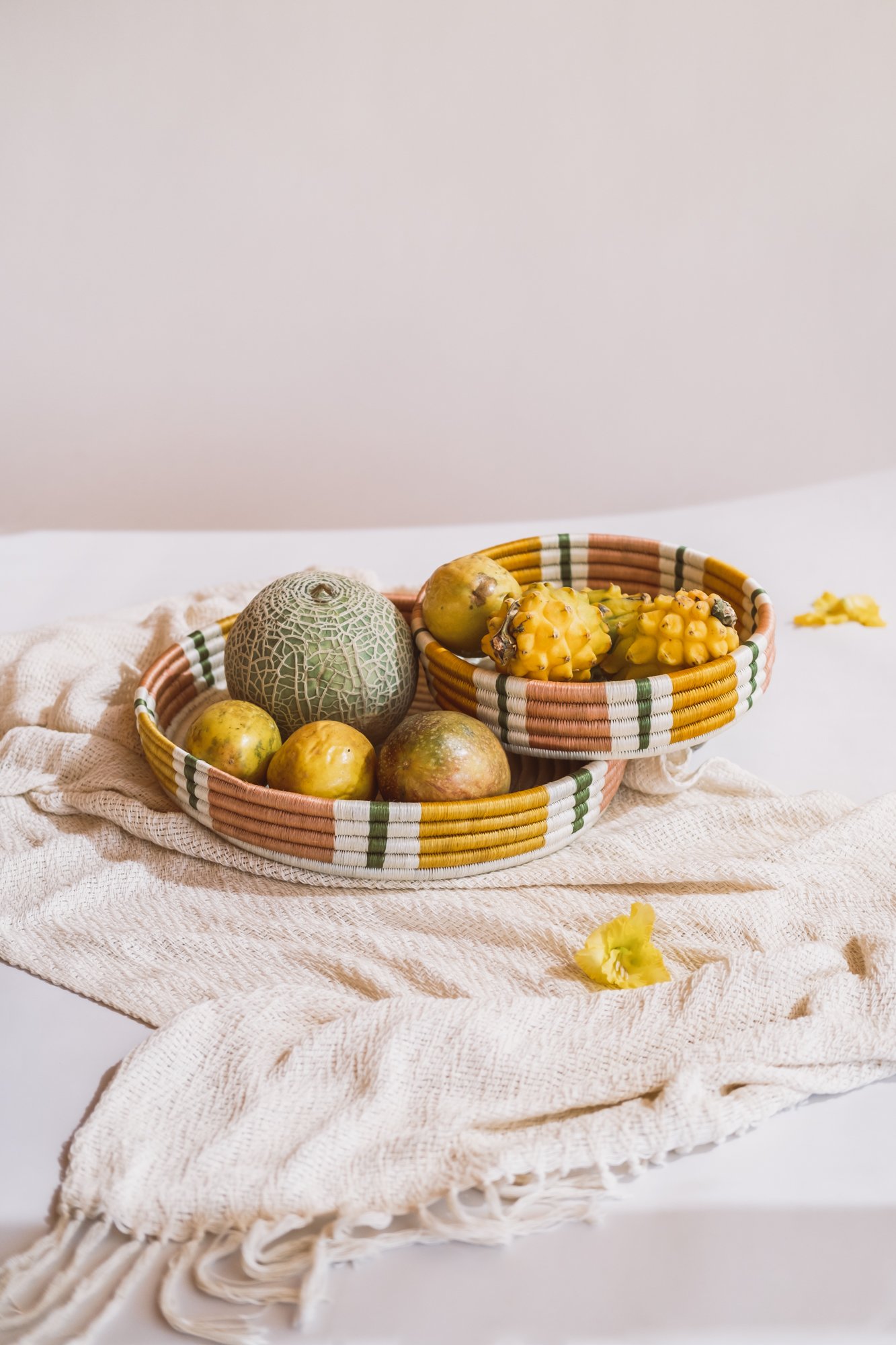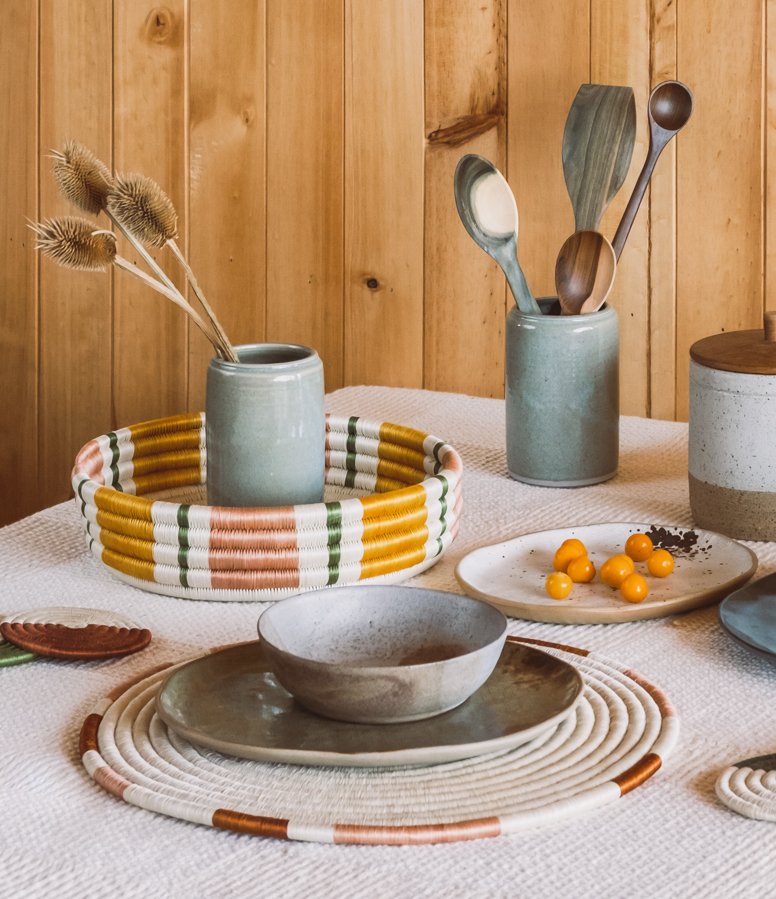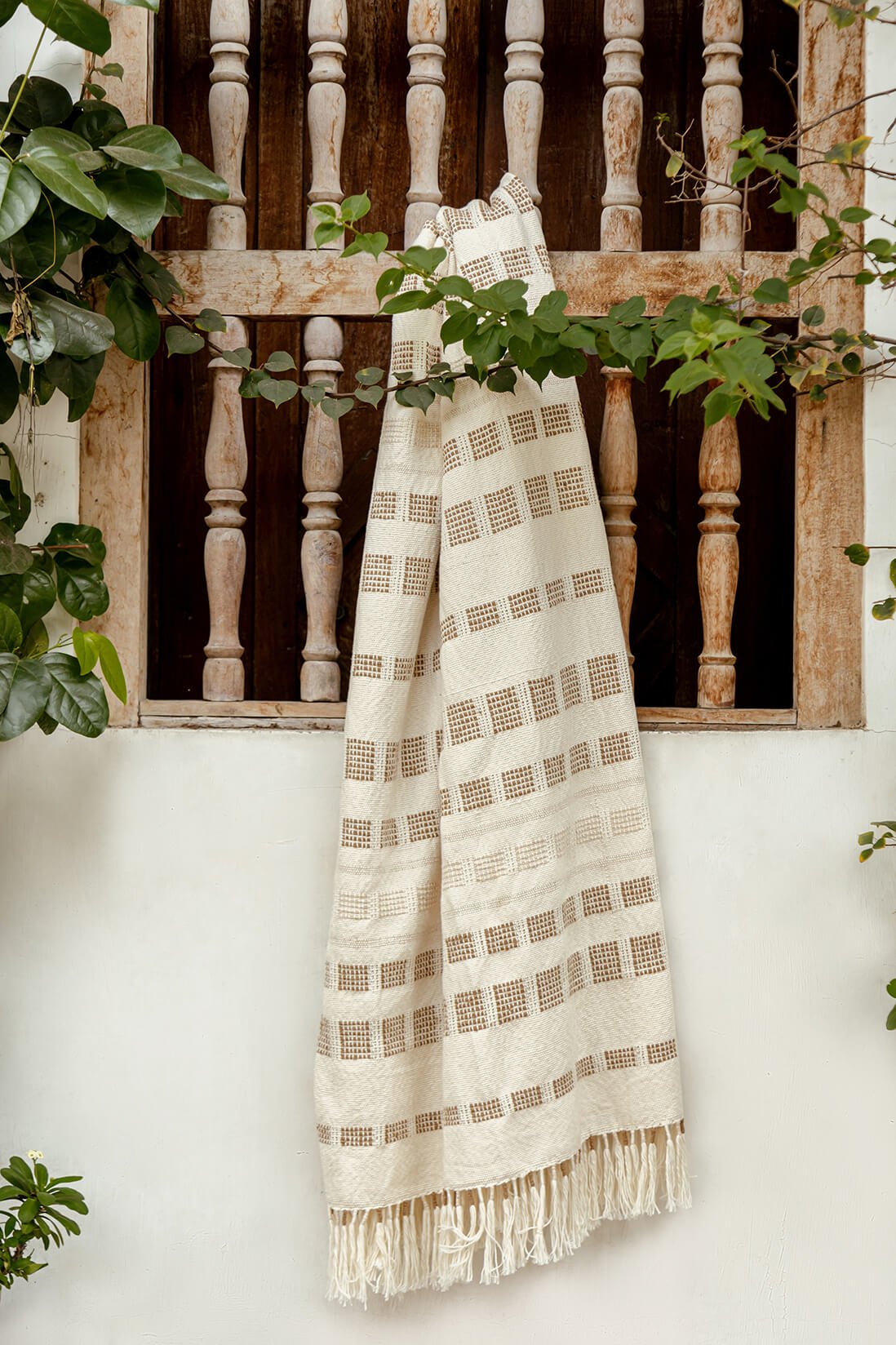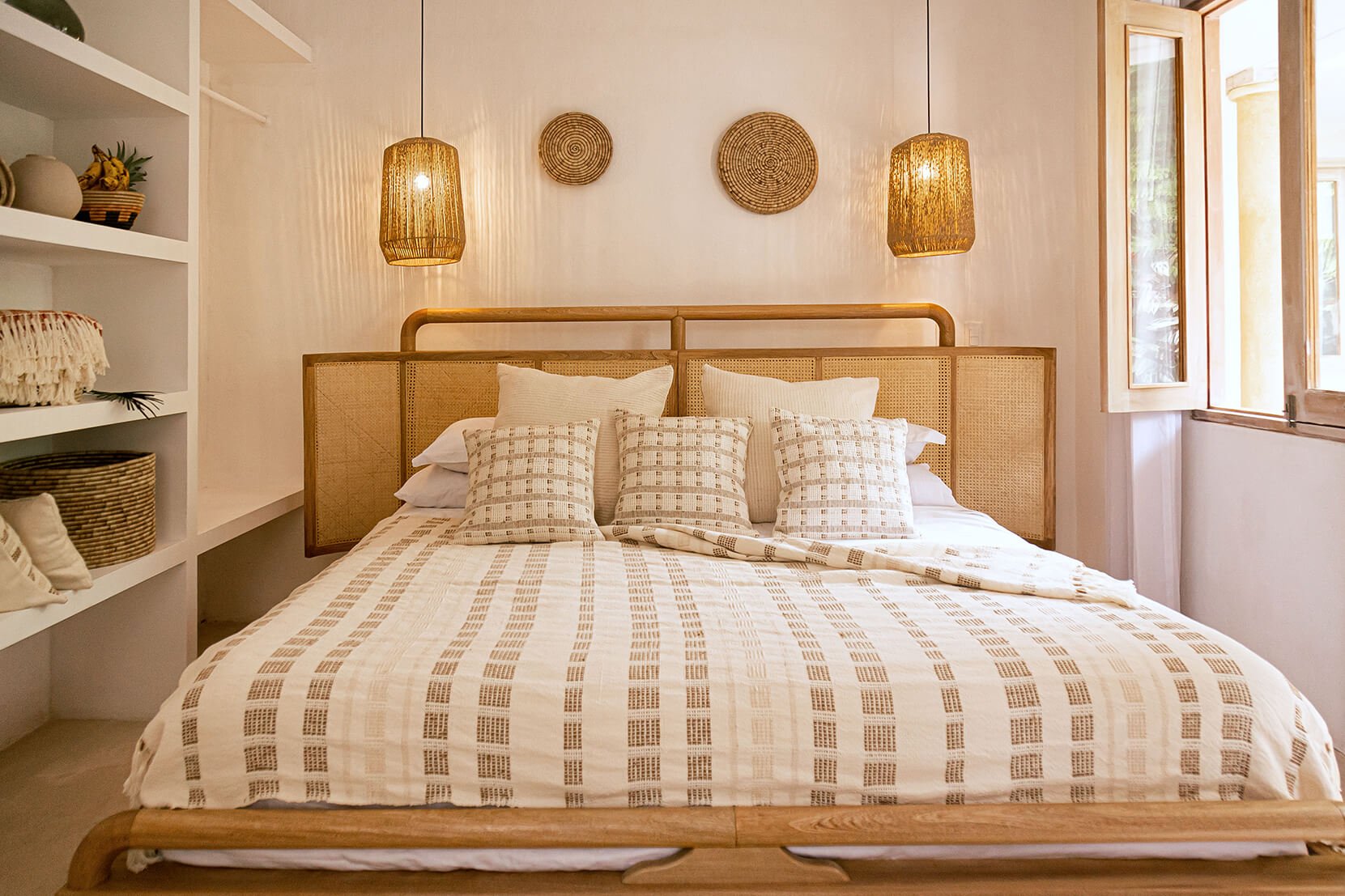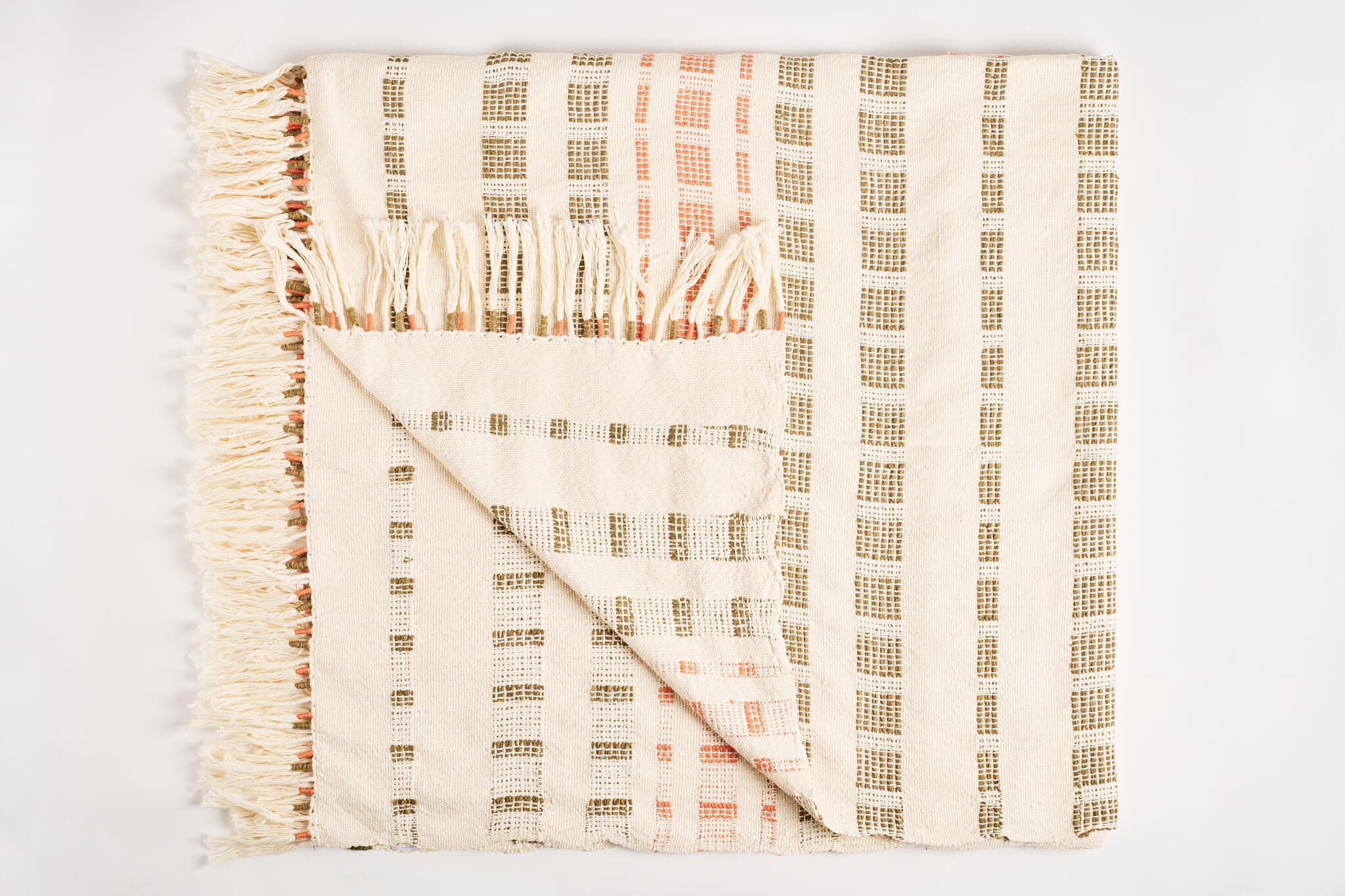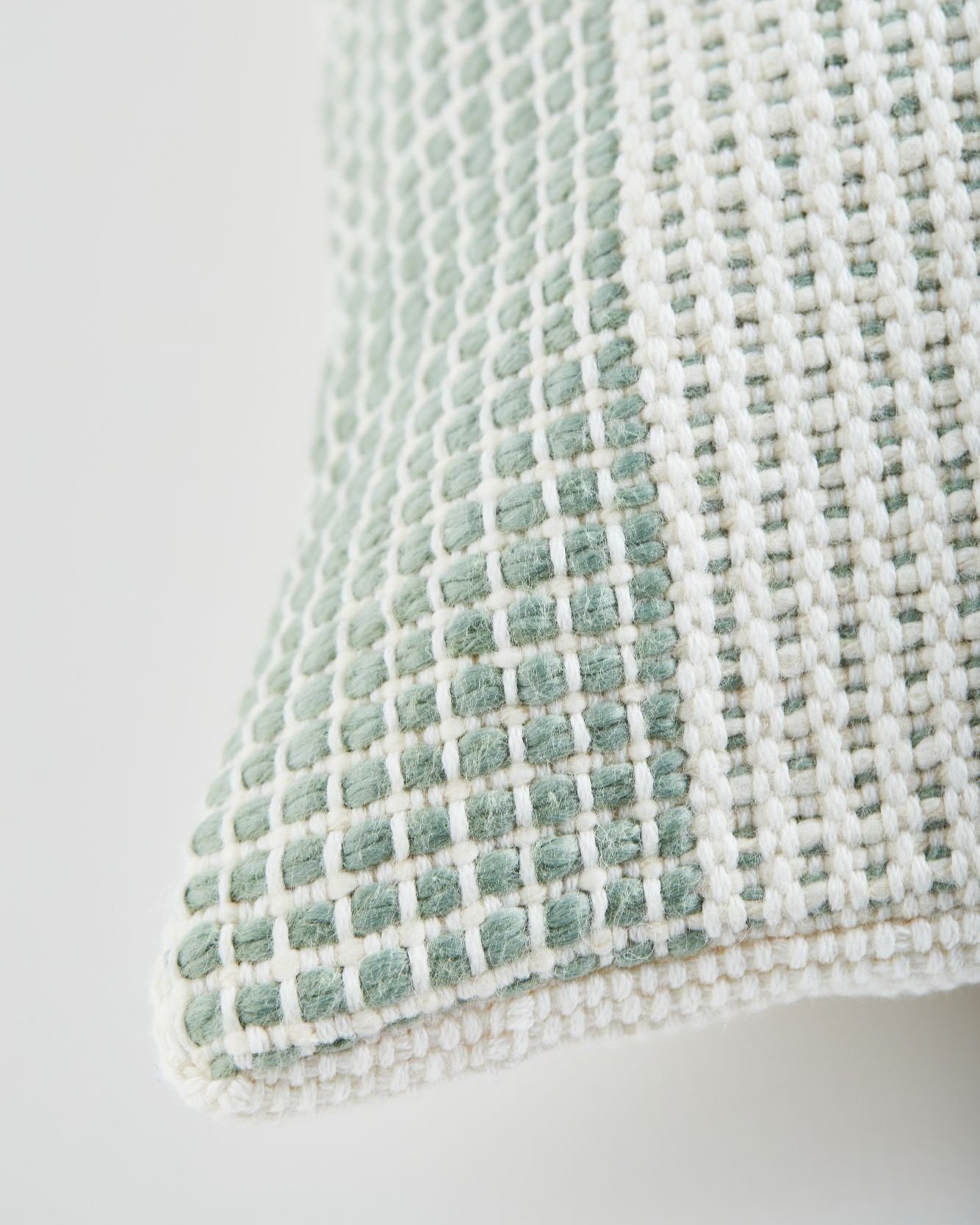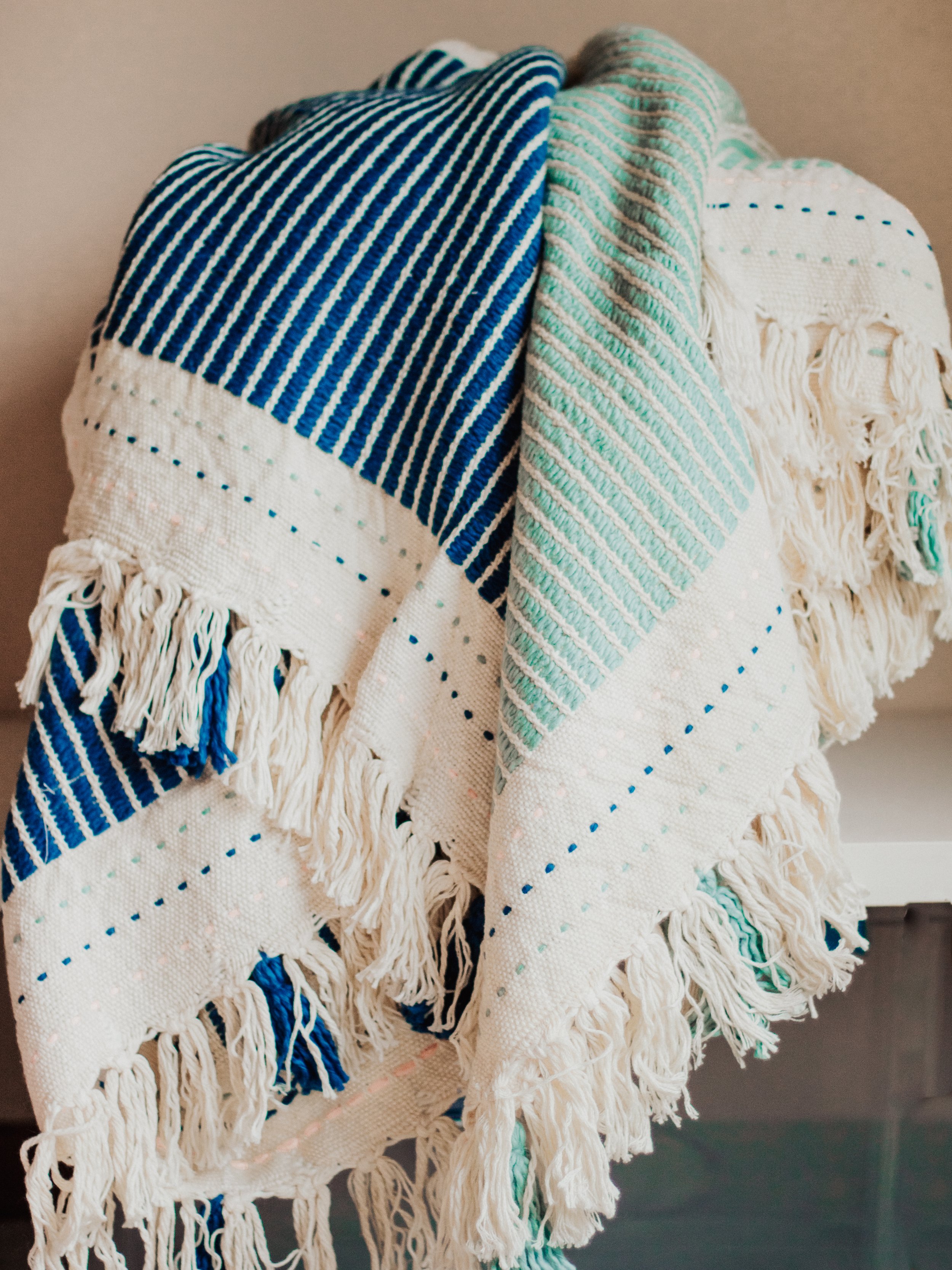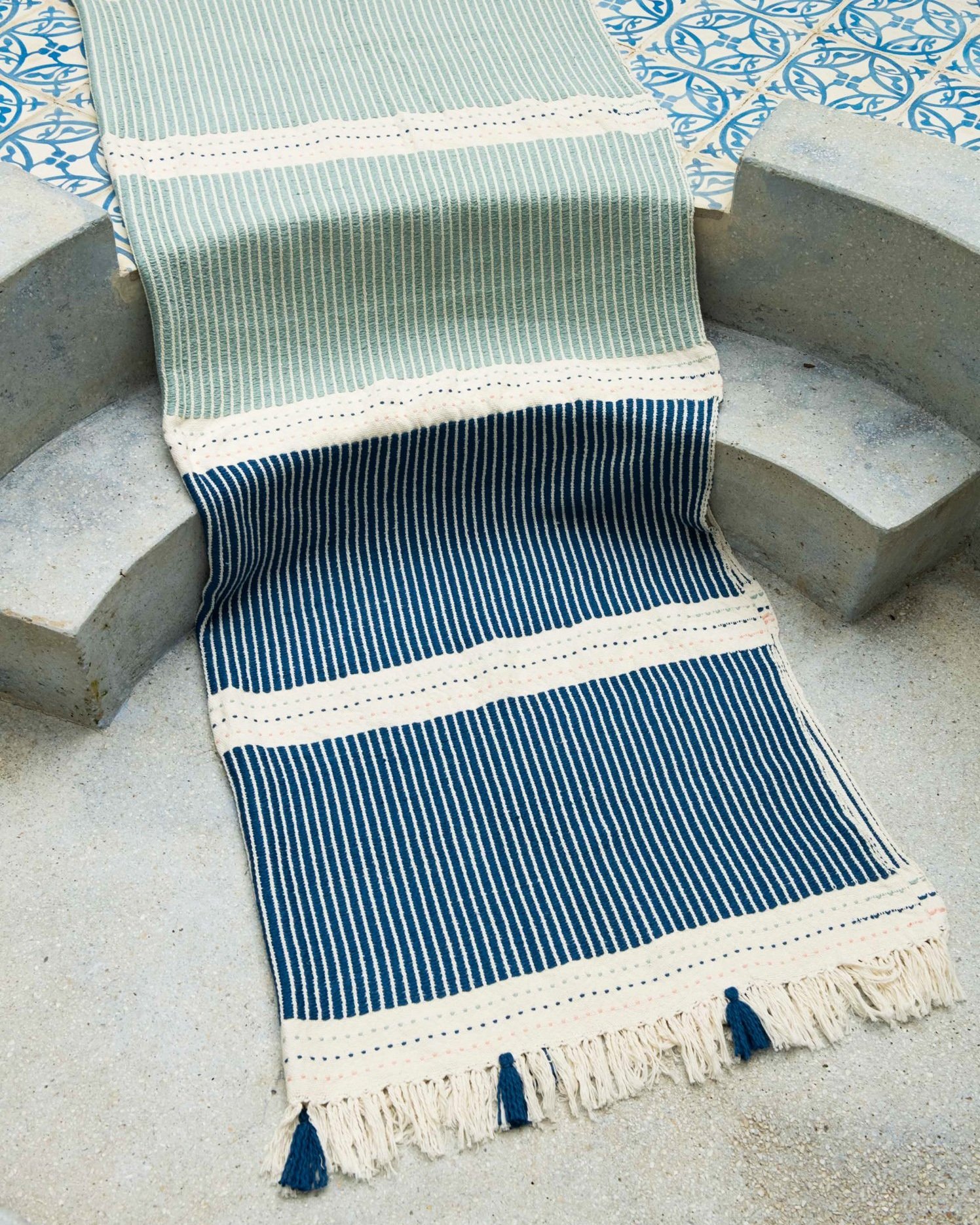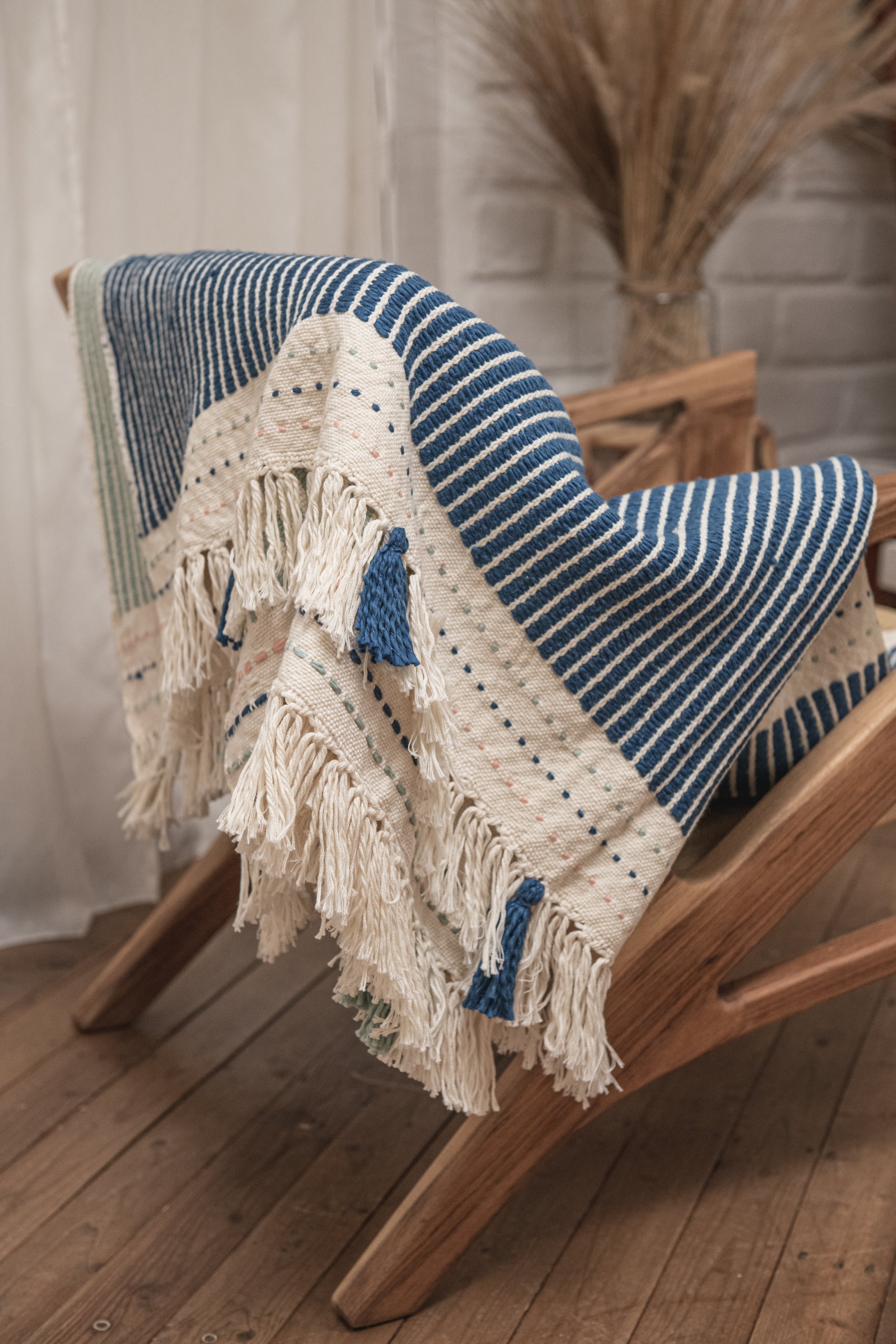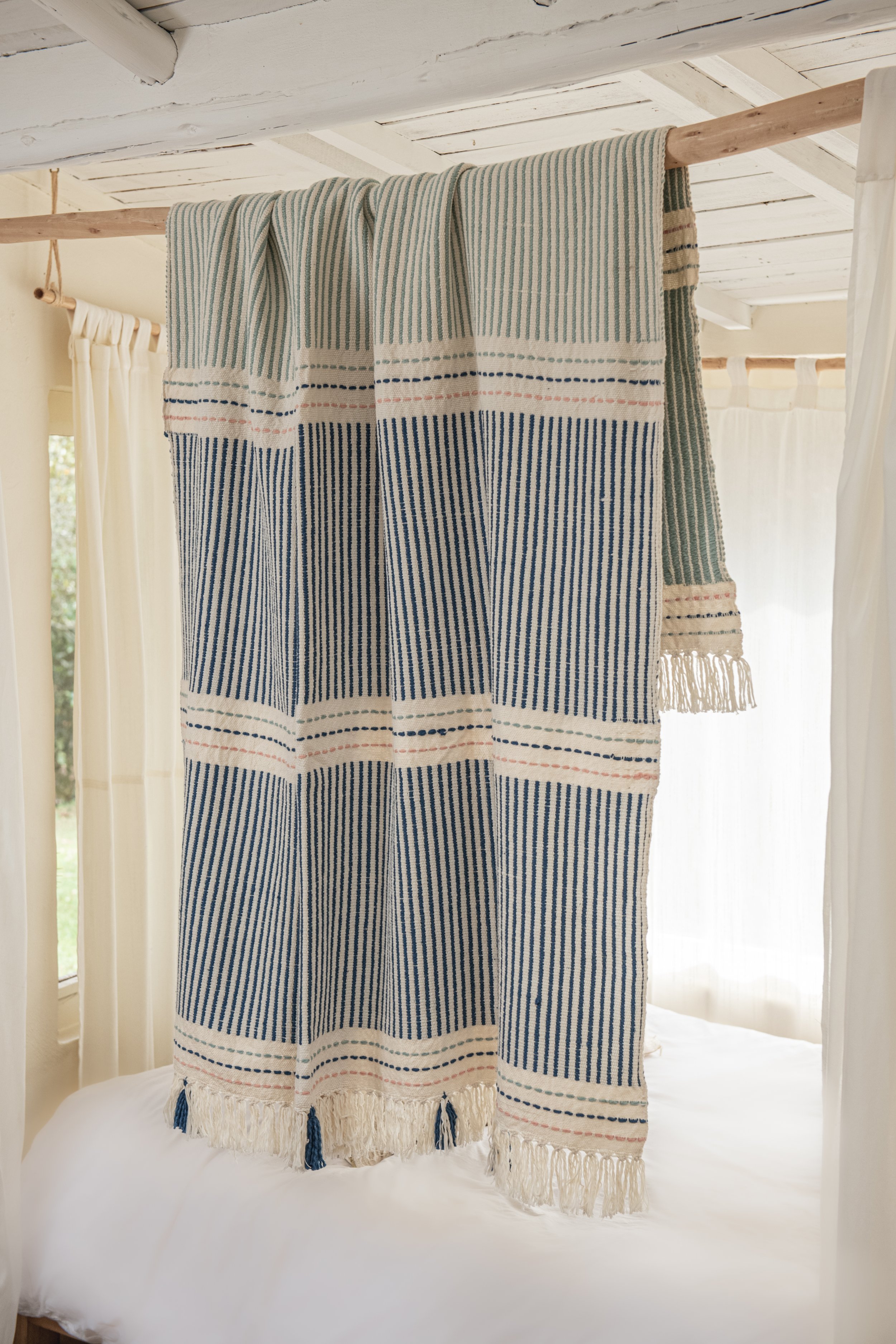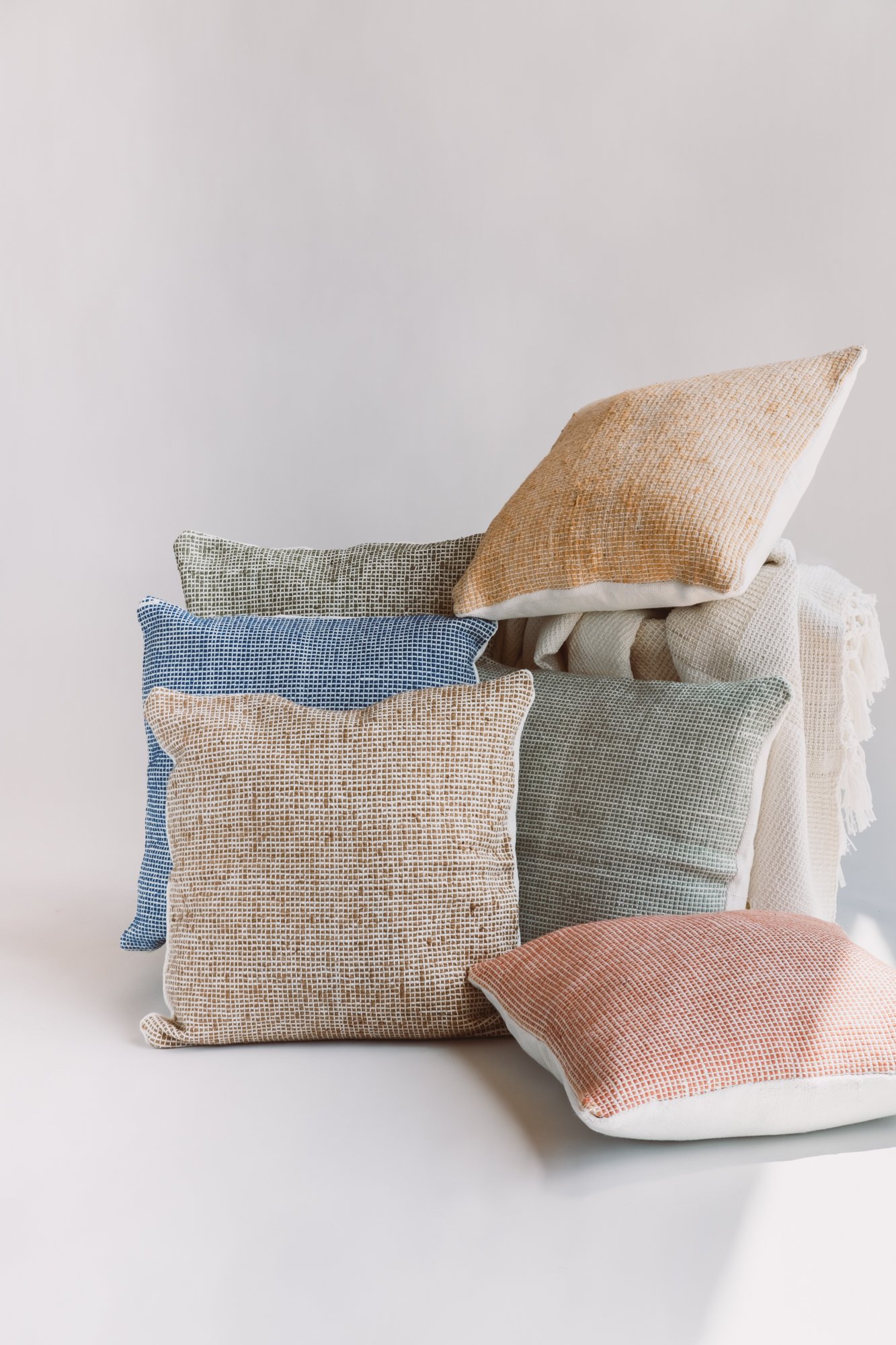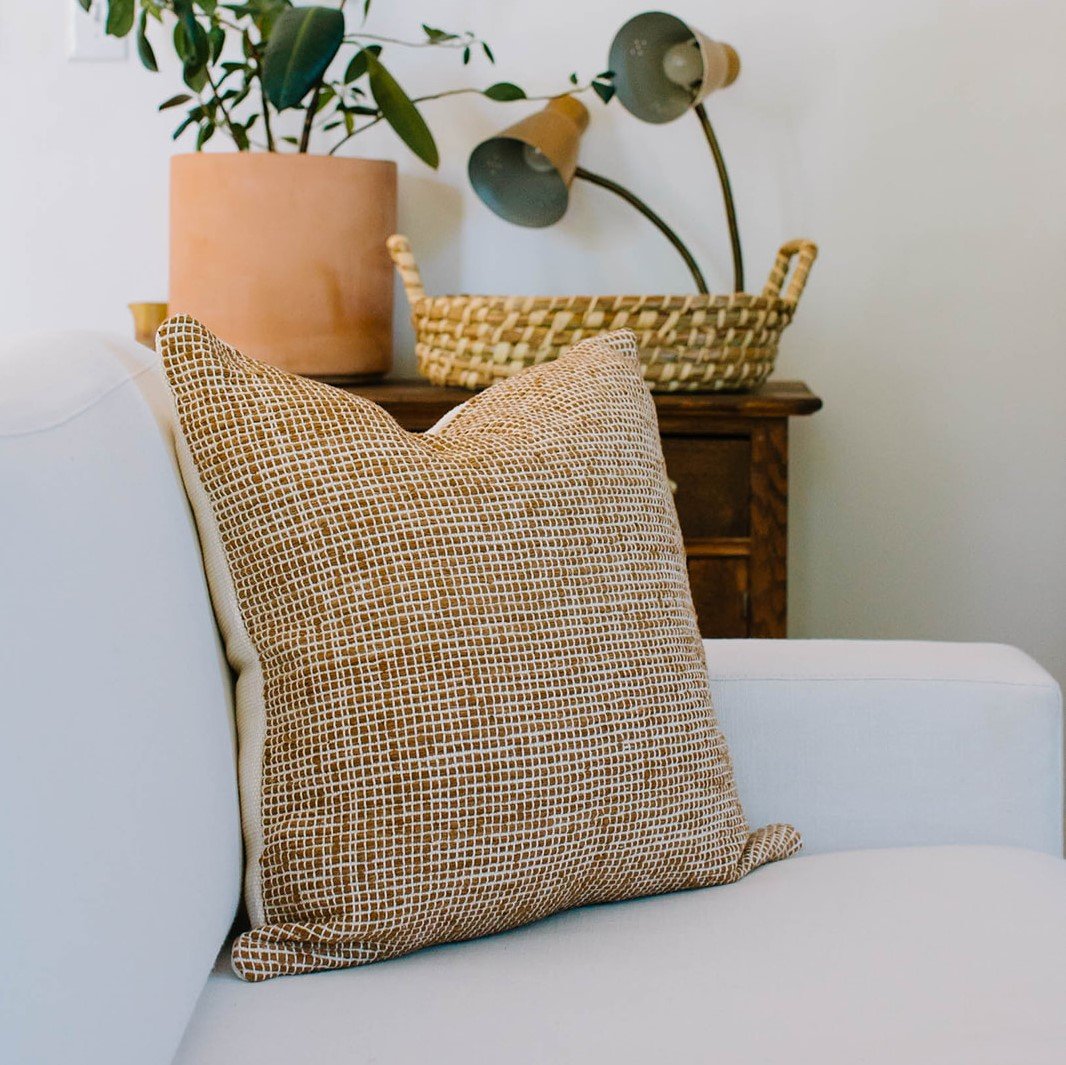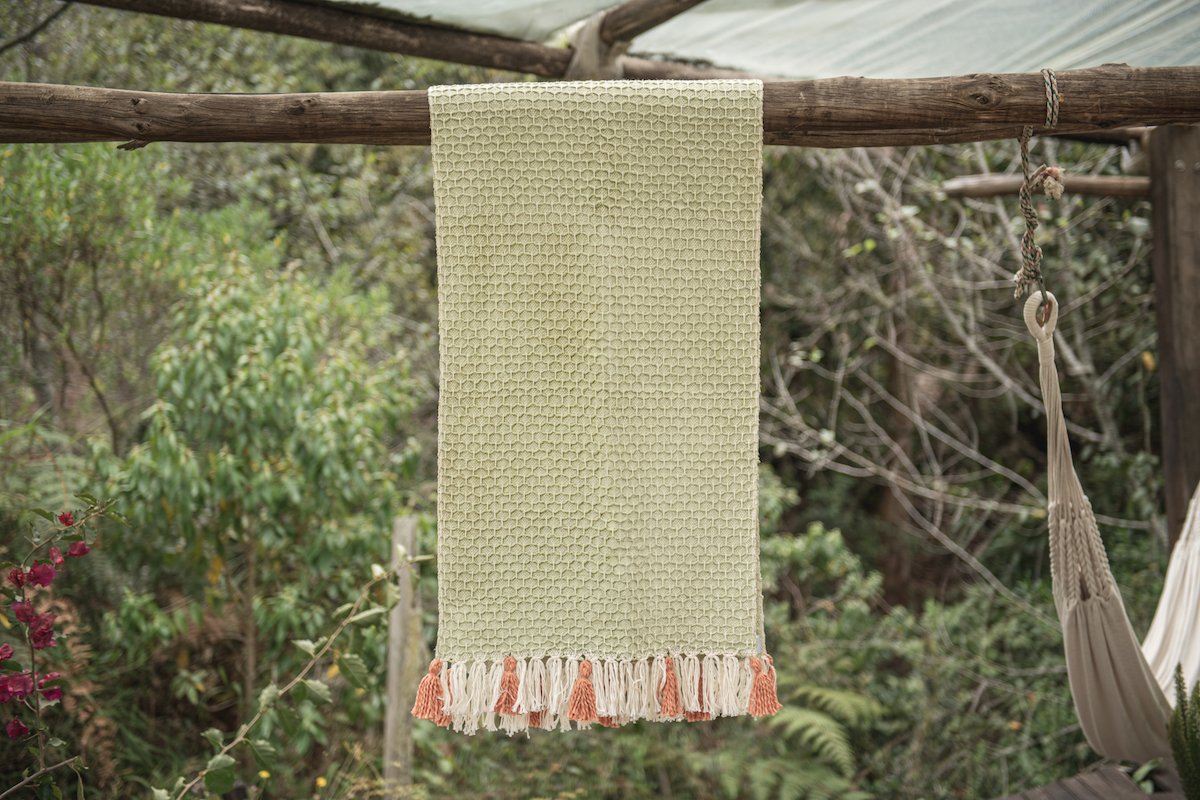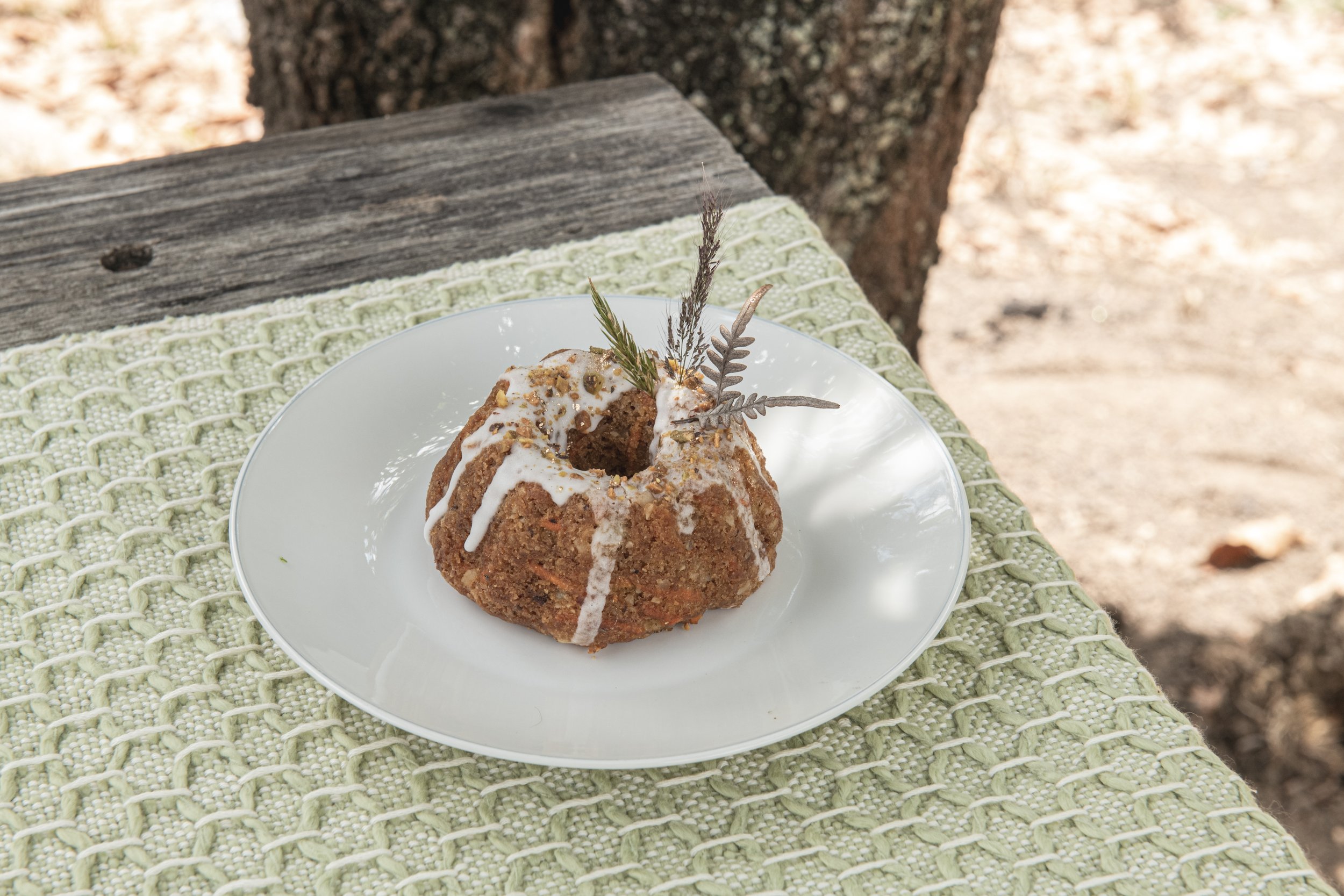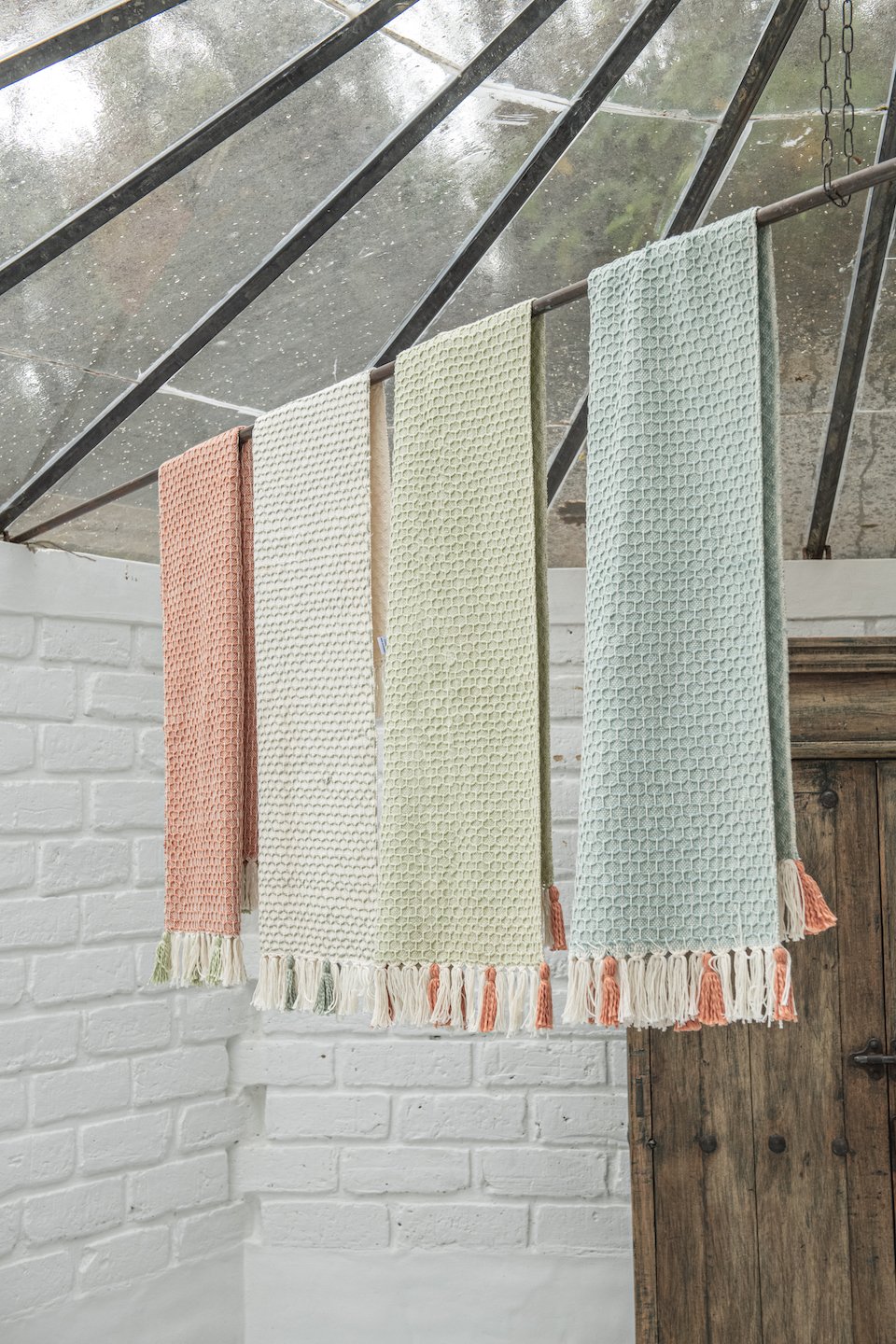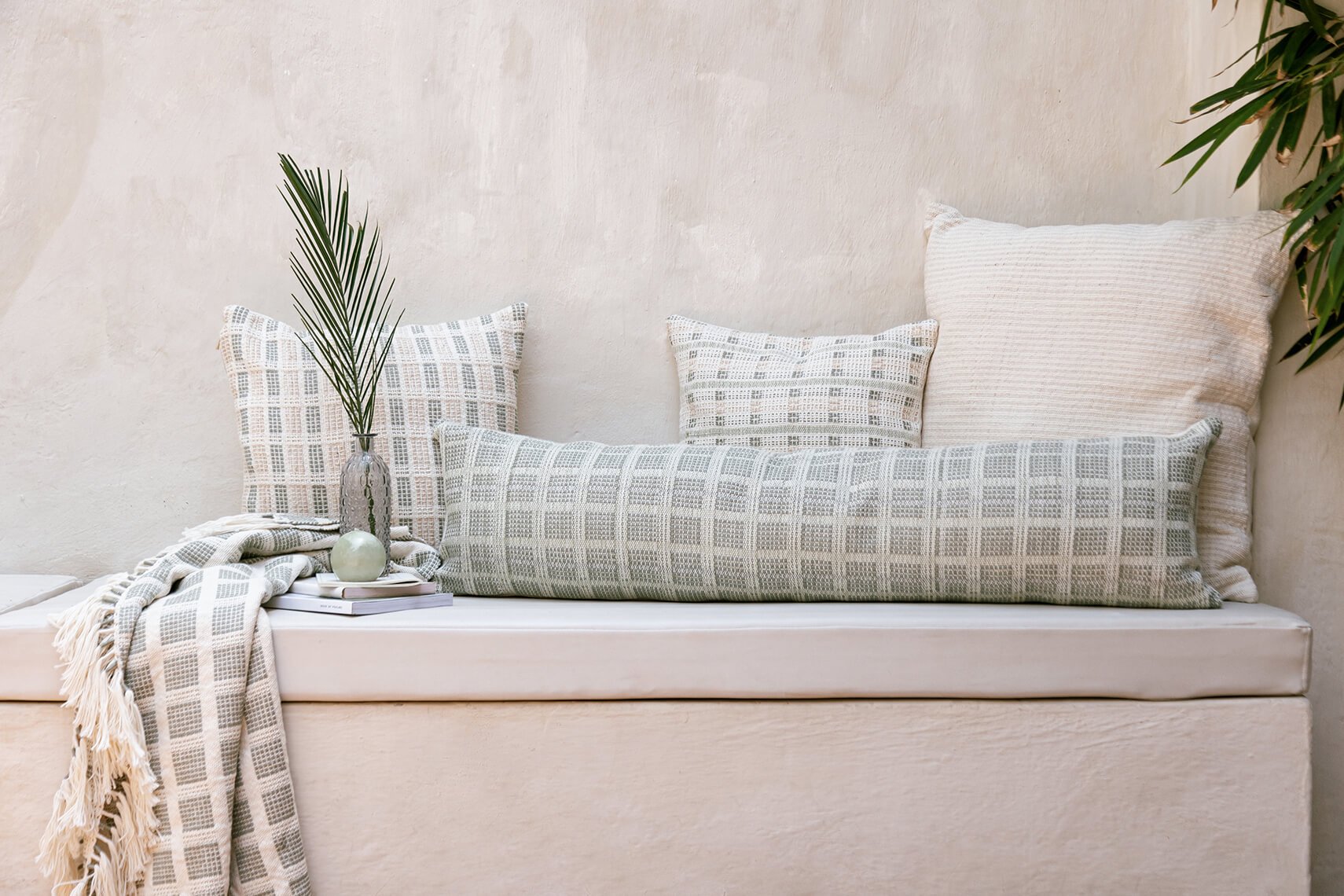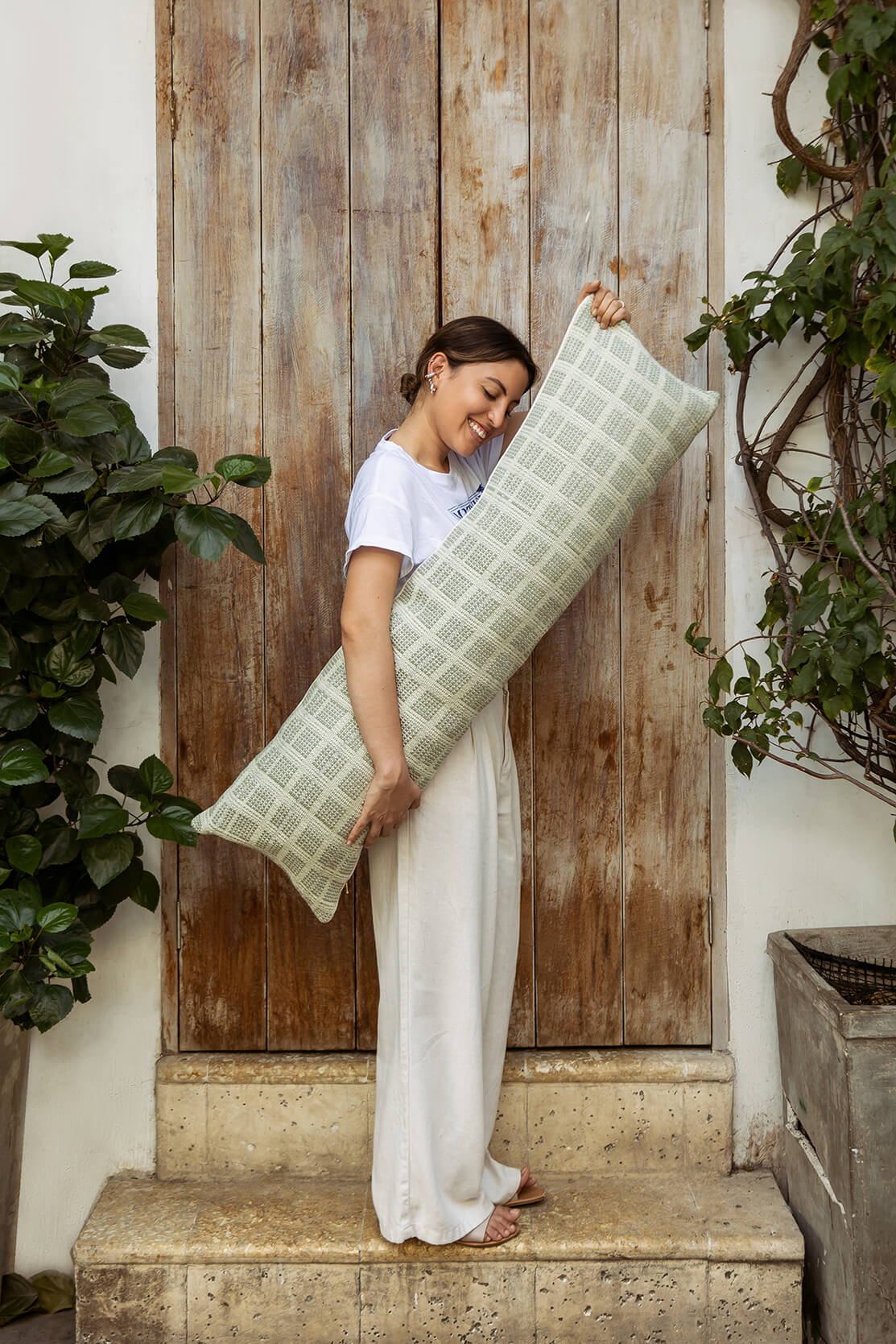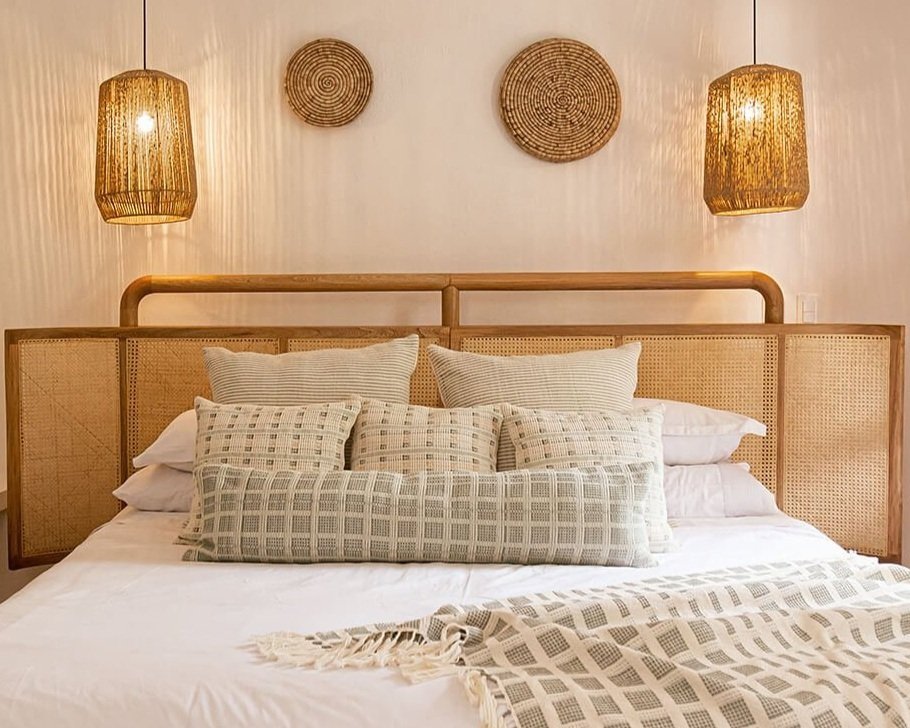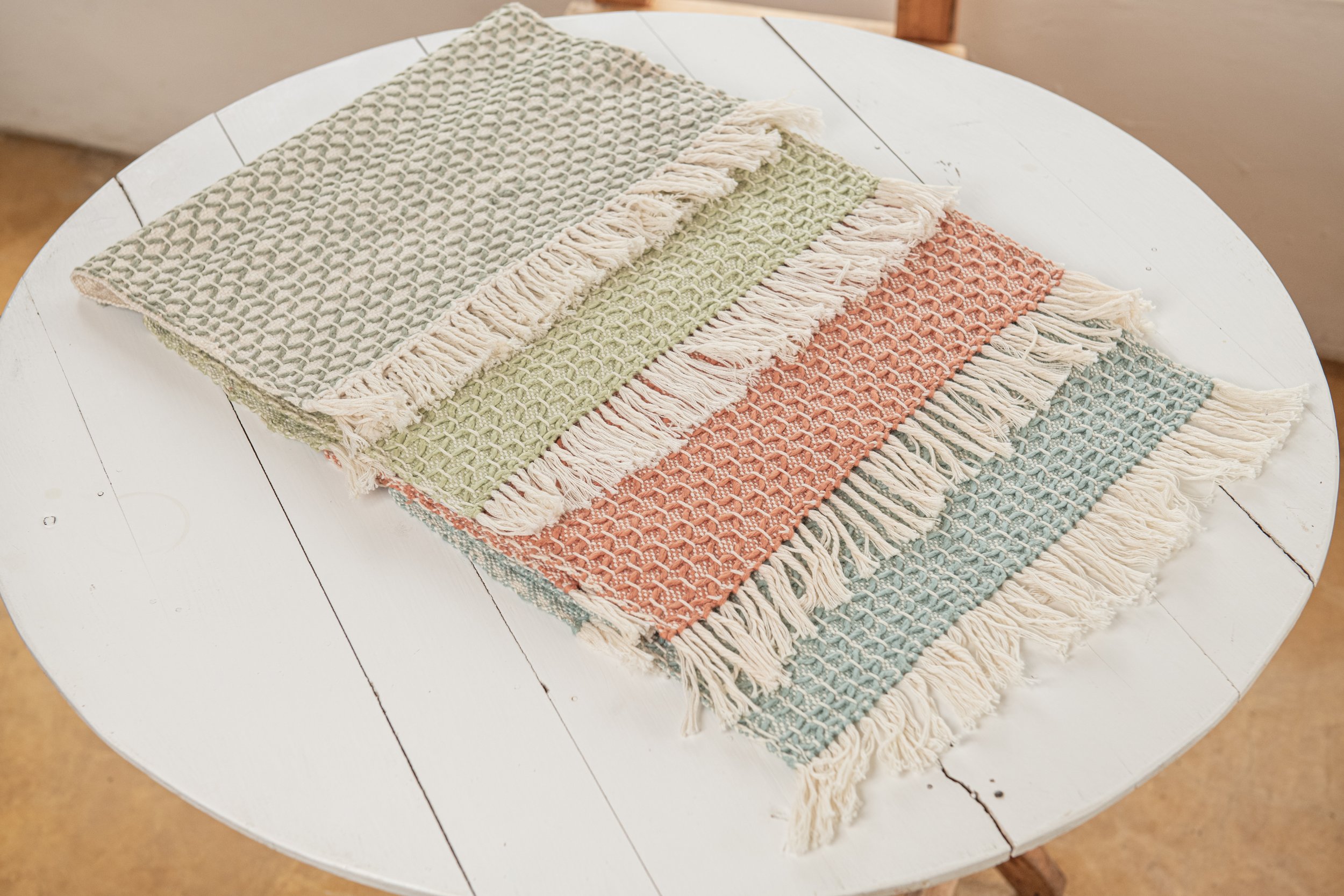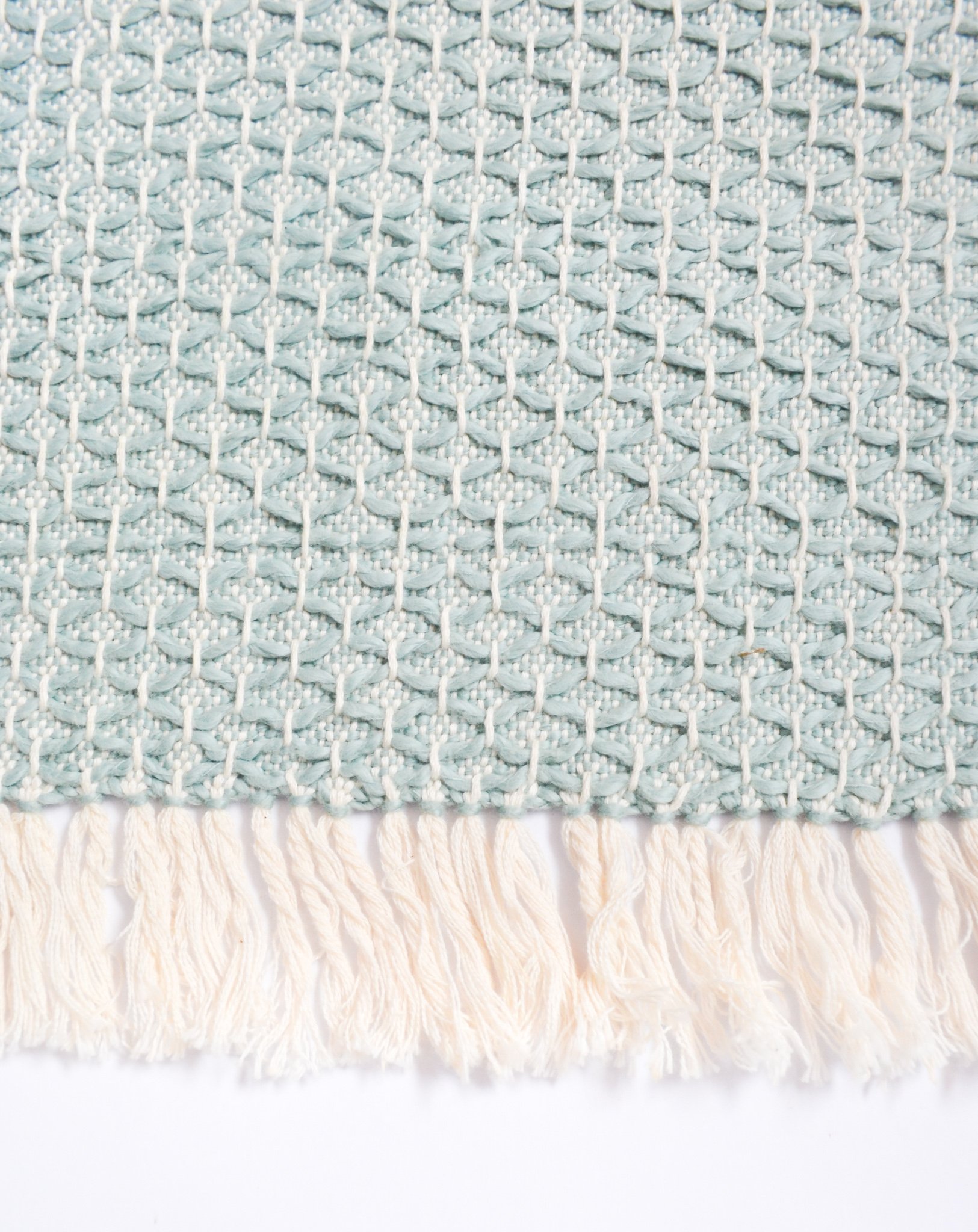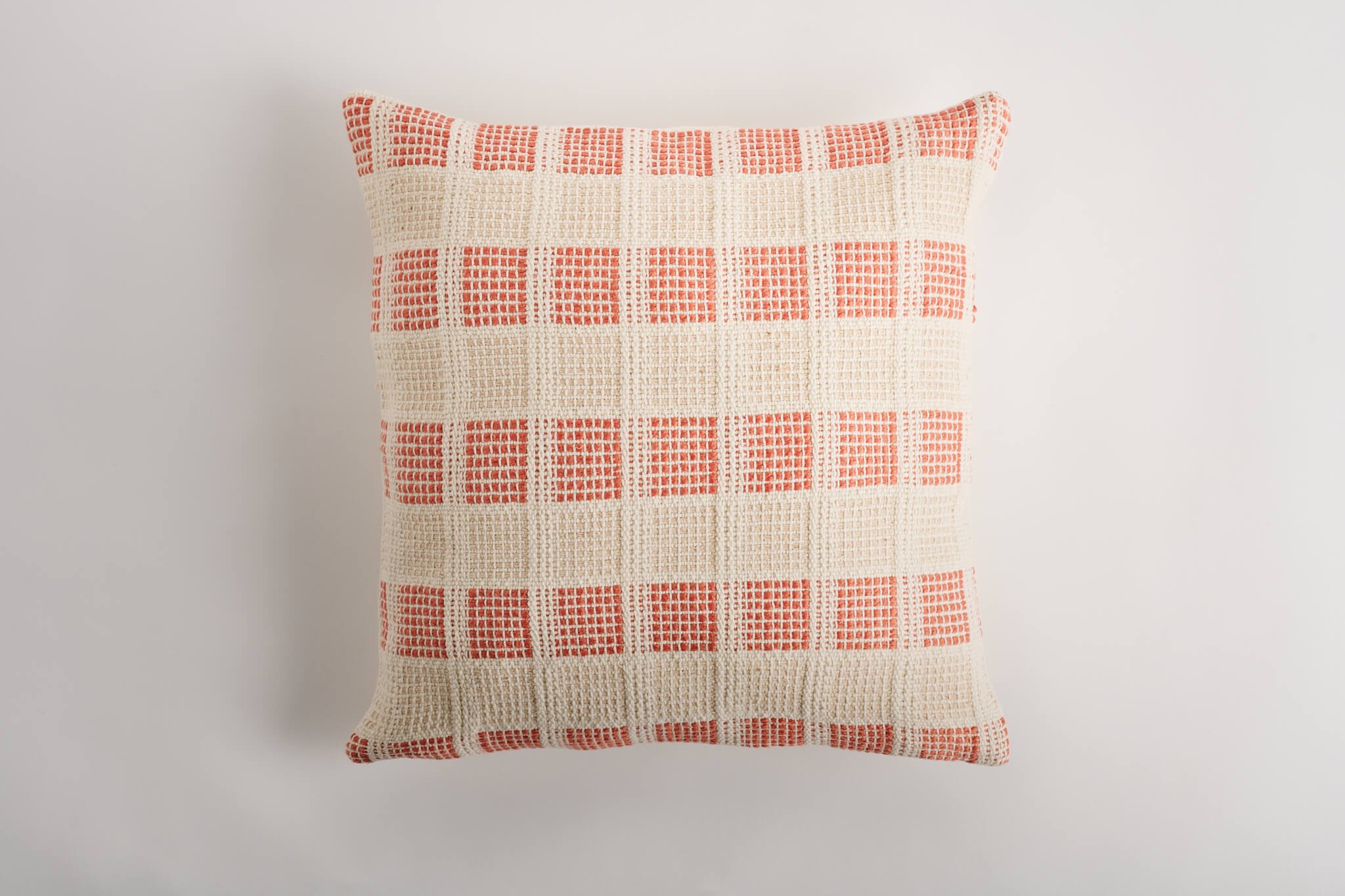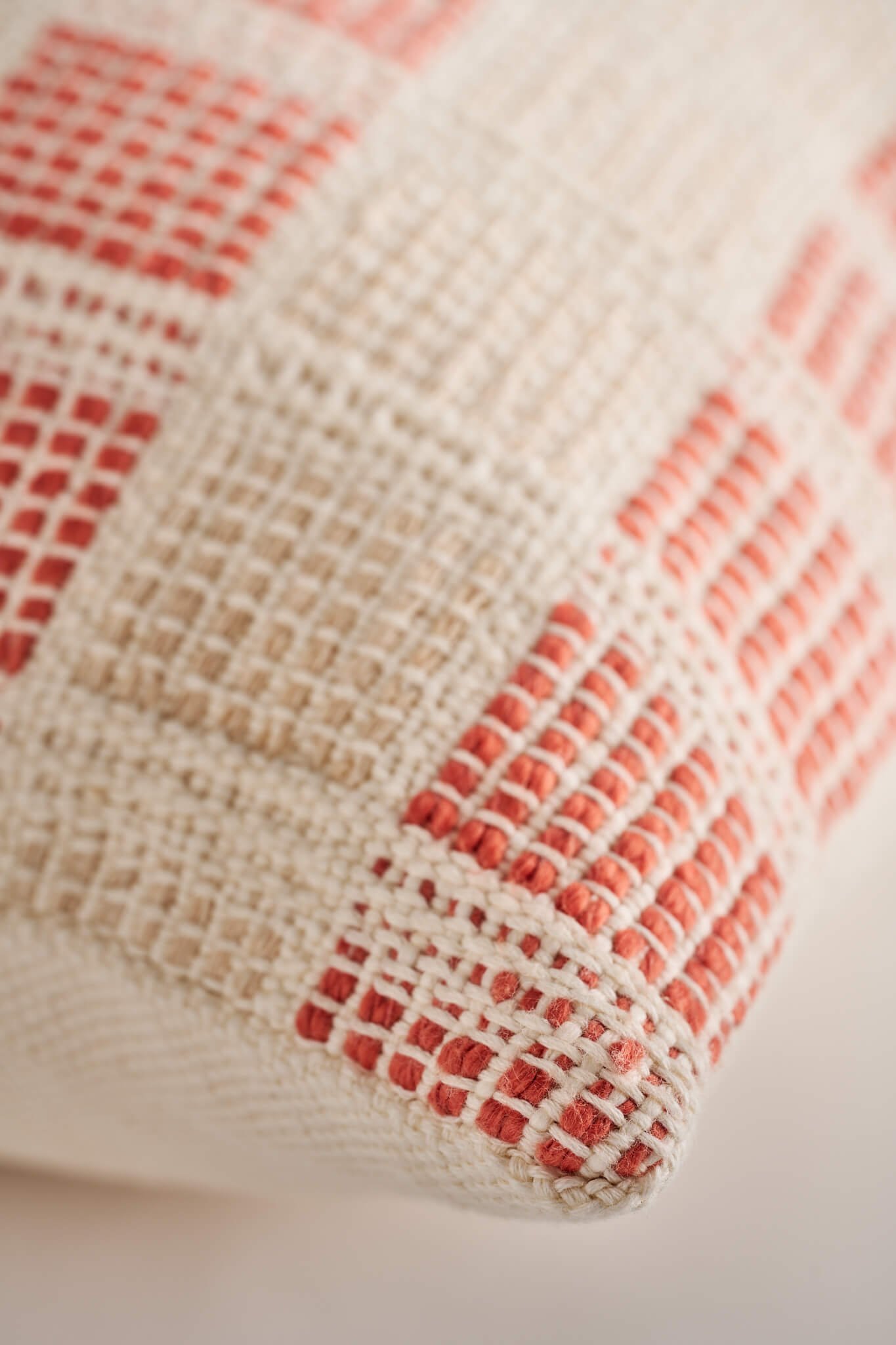3 Eco-Friendly Ways to Decorate Your Home
Guest blog by Annie Blay, Founder & Storytelling Content Writer of The Global Neighbor Project.
Our homes tell many stories. Stories of cozy evenings, gatherings with loved ones, and abundant meals. Every piece of decor tells an often unseen story as well. Environmentally-friendly and ethical design enables us to curate homes that reflect an eco-friendly lifestyle and tell stories of hope, resilience, and even resistance.
Here are a few ways we can thoughtfully design our homes:
1. Choose timeless pieces that tell a story
As the seasons change and years go by, there are art pieces, textiles, and trinkets that we hold on to. The pieces with the longest lifespans are arguably the most eco-friendly pieces.
Instead of replacing cheap, generic, and trendy decor every year or so, search for timeless pieces that you'll want to keep for the long term.
Timeless pieces as an eco-friendly lifestyle choice:
It's easy to overlook the environmental impact of the waste we produce. In the U.S. alone, Americans create over 268 million tons of waste each year. Our waste contributes to climate change as landfills release both methane gas and carbon dioxide. As we throw out decor and replace it with new pieces, we also have to consider the environmental impact of each piece's lifecycle. Each piece's materials, manufacturing, and shipping add up.
Taking the time to look for pieces we love and want to hold onto for a long time forces us to take on a more conscious approach as we shop.
Artisan-made basket trays
The stories of generations of Colombian artisans are woven into these fique basket trays. These colorful pieces are crafted with traditional materials like Colombian fique and techniques with contemporary design in mind.
Cumbia-inspired throw blanket
This handmade throw blanket is not only a luxurious and breathable addition to any living space. It's also a talking piece. Zuahaza’s designer Tatiana named this blanket after cumbia, Colombian folkloric music and dance that mixes African, indigenous, and Spanish musical melodies and instruments.
Andes-inspired block weave pillow covers
These eye-catching block weave pillow covers are made with love by women in Charala, Colombia. Each pillow's color is inspired by a hue found in the unique páramo ecosystems of the Colombian Andes mountains.
2. Brighten your home with naturally-dyed textiles
Throughout history, textiles have been colored with natural dyes made from plants and other compounds found in nature. Yet today, very few of us have any products made with natural dyes. Now synthetically-dyed products dominate the global textile market. It's become such a norm that most of us do not think about where the color in our home goods comes from.
Although home goods made with synthetic dyes are still easier to come by, naturally-dyed decor is becoming more accessible. There is a growing movement of brands revitalizing naturally-dyed textiles by blending ancient craftsmanship with modern design.
Naturally-dyed textiles for an eco-friendly lifestyle and ethical alternative to synthetically-dyed textiles:
Synthetic dyes are widespread because they are cheap, but there are grave environmental and human costs that come along with the lower price tag. Most synthetic dyes are sourced from petroleum, a non-renewable resource. Many synthetic dye factories dump chemical waste into nearby rivers, often destroying entire ecosystems, killing wildlife, contaminating water sources, and creating toxic run-off that disturbs communities.
On the other hand, the environmental impact of natural dyes is minimal. Natural dyes are made from organic materials like onion skins and avocado pits. With traditional dyeing techniques, natural dyes create beautiful products that hold onto their color.
Playful blue throw blanket made from natural dyes
Colored with natural indigo blue dye, this throw blanket is soft, reversible, and sustainably made by Colombian artisans. Drape it across a cozy, inviting bed, or snuggle up with it on your couch.
Naturally dyed earth-tone pillows
These simple yet luxurious pillows come in six nature-inspired colors. Each of the six pillows are made by hand with non-toxic natural dyes. The colors and dyes include Sage Green (tara and molle dye), Olive Green (aro dye), Earth Brown (guayabo dye), Sunrise Orange (ratania with uña de gato dye), Terracotta Red (ratania with uña de gato dye), and Lagoon Blue (indigo dye).
One-of-a-kind green table runner with cream and peach tassels
This one-of-a-kind naturally dyed table runner instantly adds personality to any tabletop. It's delicately accented with ratania with uña de gato dyed tassels that beautifully contrast the green, which is made dyed with eucalyptus and indigo.
3. Opt for products made with sustainable materials like organic cotton
Like natural dyes, organic materials were the norm in the past. The introduction of pesticides, chemicals, and toxins made the production of materials more profitable but less sustainable.
When you opt for products made with sustainable materials, you choose to save water, reduce energy consumption, protect communities from life-threatening toxins, and preserve ecosystems.
Organic cotton for an eco-friendly lifestyle and ethical alternative to conventional cotton:
Conventional cotton has been called "the world's dirtiest" crop because of its devastating environmental impact. Conventional cotton farming relies on massive amounts of natural resources. It takes nearly 10,000 liters of water to produce one single kilogram of cotton fiber with conventional methods. In addition, the pesticides used in conventional cotton farming contaminate local water sources, which impacts workers as well as the larger community and ecosystem. Conventional cotton farming is also unsustainable for soil health. Another dark side of the cotton industry is its use of slave labor throughout history and today.
The good news is that opting for textiles made with organic cotton supports the growth of an environmentally-friendly and ethical industry. Organic cotton production uses 71% less water and 62% less energy than conventional cotton. Typical organic farming techniques like crop rotation and compositing allow soil to regenerate and more easily store carbon and water. Healthy soil combats climate change because atmospheric carbon locks into healthy soil. Since organic cotton is made without pesticides and other toxins, workers and their communities are protected.
Sage and mint green oversized lumbar pillow
This homey lumbar pillow cover is made from 100% organic cotton. It perfectly completes any bed with calming colors and the softest handwoven organic cotton.
Handwoven organic cotton placemat set
These handmade placemats perfectly complement a whimsical tablescape. They are handwoven with organic cotton that is sourced locally from Colombia and Peru.
Luxurious terracotta and cream decorative pillow cover
Bring warmth to your home with these luxurious decorative pillows. They are made with 100% organic cotton and inspired by Cartagena, a vibrant and culturally rich city on Colombia's Caribbean coast.

